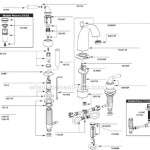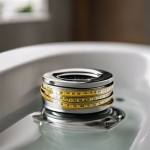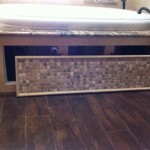Cast Iron Vs Acrylic Bathtub: Unveiling the Essential Aspects
When renovating or revamping a bathroom, selecting the perfect bathtub is crucial. Two popular options that stand out are cast iron and acrylic bathtubs. Each comes with its unique set of advantages and distinctions. To help you make an informed decision, let's delve into the essential aspects of both options.
Cast Iron Bathtubs: Durability and Warmth
Cast iron bathtubs are renowned for their exceptional durability. Their heavy construction ensures stability and resistance to wear and tear. They retain heat effectively, providing a luxurious and warm bathing experience, especially in colder climates.
Acrylic Bathtubs: Lightweight and Versatile
In contrast, acrylic bathtubs are known for their lightweight and flexible nature. Made from durable plastic, they are easier to install and maneuver. Acrylic tubs offer a wide array of shapes, styles, and color options, enabling customization to suit any bathroom design.
Maintenance and Cleaning
Cast iron bathtubs require regular maintenance and special care. To prevent rust, they should be thoroughly dried after each use and occasionally treated with a protective sealant. Acrylic bathtubs, on the other hand, are generally easier to clean and maintain. Their non-porous surface resists staining and mildew, making them more hygienic.
Cost and Installation
Cast iron bathtubs tend to be more expensive than acrylic counterparts. Their heavy weight requires specialized equipment for installation, which can add to the overall cost. Acrylic bathtubs, being lighter, are easier to install, potentially reducing installation expenses.
Scratches and Repair
Cast iron bathtubs are more resistant to scratches than acrylic bathtubs. However, if scratches do occur, they can be difficult to repair. Acrylic bathtubs, while more prone to scratches, can be easily repaired using acrylic repair kits, restoring their original appearance.
Sustainability
In terms of sustainability, cast iron bathtubs have a longer lifespan and can be recycled at the end of their use. Acrylic bathtubs are typically less durable and may end up in landfills. However, some manufacturers are exploring eco-friendly acrylic options.
Conclusion
The choice between a cast iron and acrylic bathtub ultimately depends on individual preferences and bathroom requirements. Cast iron offers durability and warmth, while acrylic provides versatility and ease of maintenance. Consider the factors discussed in this article and weigh them against your specific needs to make an informed decision that will enhance your bathroom experience for years to come.

4 Common Bathtub Materials Pros Cons What To Buy For Your Bathroom
Acrylic Bathtubs Vs Cast Iron Which Is Right For You

Acrylic Bathtub Vs Cast Iron Tub Comparison

Acrylic Vs Cast Iron Tubs Pros And Cons Plumbwize

Acrylic Vs Cast Iron Signature Hardware

Acrylic Vs Resin Tubs Pros Cons Of Each Long Home

Acrylic Vs Resin The Ultimate Winner Of An Affordable Bathtub

Acrylic Bathtub Vs Cast Iron Tub Comparison

Acrylic Vs Cast Iron Tub Which Is Better
Acrylic Bathtubs Vs Cast Iron Which Is Right For You








